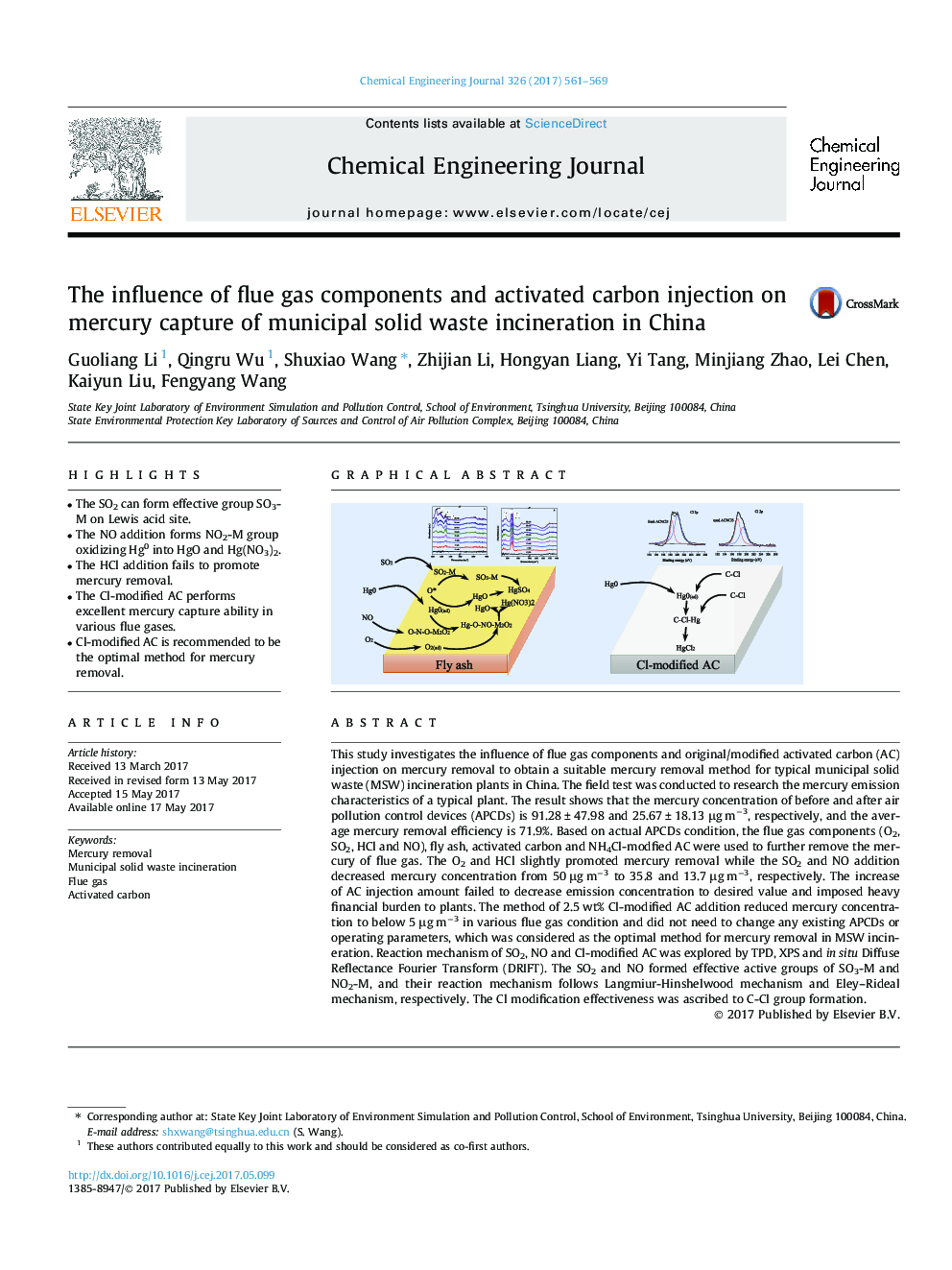| کد مقاله | کد نشریه | سال انتشار | مقاله انگلیسی | نسخه تمام متن |
|---|---|---|---|---|
| 6465483 | 1422952 | 2017 | 9 صفحه PDF | دانلود رایگان |
- The SO2 can form effective group SO3-M on Lewis acid site.
- The NO addition forms NO2-M group oxidizing Hg0 into HgO and Hg(NO3)2.
- The HCl addition fails to promote mercury removal.
- The Cl-modified AC performs excellent mercury capture ability in various flue gases.
- Cl-modified AC is recommended to be the optimal method for mercury removal.
This study investigates the influence of flue gas components and original/modified activated carbon (AC) injection on mercury removal to obtain a suitable mercury removal method for typical municipal solid waste (MSW) incineration plants in China. The field test was conducted to research the mercury emission characteristics of a typical plant. The result shows that the mercury concentration of before and after air pollution control devices (APCDs) is 91.28 ± 47.98 and 25.67 ± 18.13 μg mâ3, respectively, and the average mercury removal efficiency is 71.9%. Based on actual APCDs condition, the flue gas components (O2, SO2, HCl and NO), fly ash, activated carbon and NH4Cl-modfied AC were used to further remove the mercury of flue gas. The O2 and HCl slightly promoted mercury removal while the SO2 and NO addition decreased mercury concentration from 50 μg mâ3 to 35.8 and 13.7 μg mâ3, respectively. The increase of AC injection amount failed to decrease emission concentration to desired value and imposed heavy financial burden to plants. The method of 2.5 wt% Cl-modified AC addition reduced mercury concentration to below 5 μg mâ3 in various flue gas condition and did not need to change any existing APCDs or operating parameters, which was considered as the optimal method for mercury removal in MSW incineration. Reaction mechanism of SO2, NO and Cl-modified AC was explored by TPD, XPS and in situ Diffuse Reflectance Fourier Transform (DRIFT). The SO2 and NO formed effective active groups of SO3-M and NO2-M, and their reaction mechanism follows Langmiur-Hinshelwood mechanism and Eley-Rideal mechanism, respectively. The Cl modification effectiveness was ascribed to C-Cl group formation.
91
Journal: Chemical Engineering Journal - Volume 326, 15 October 2017, Pages 561-569
